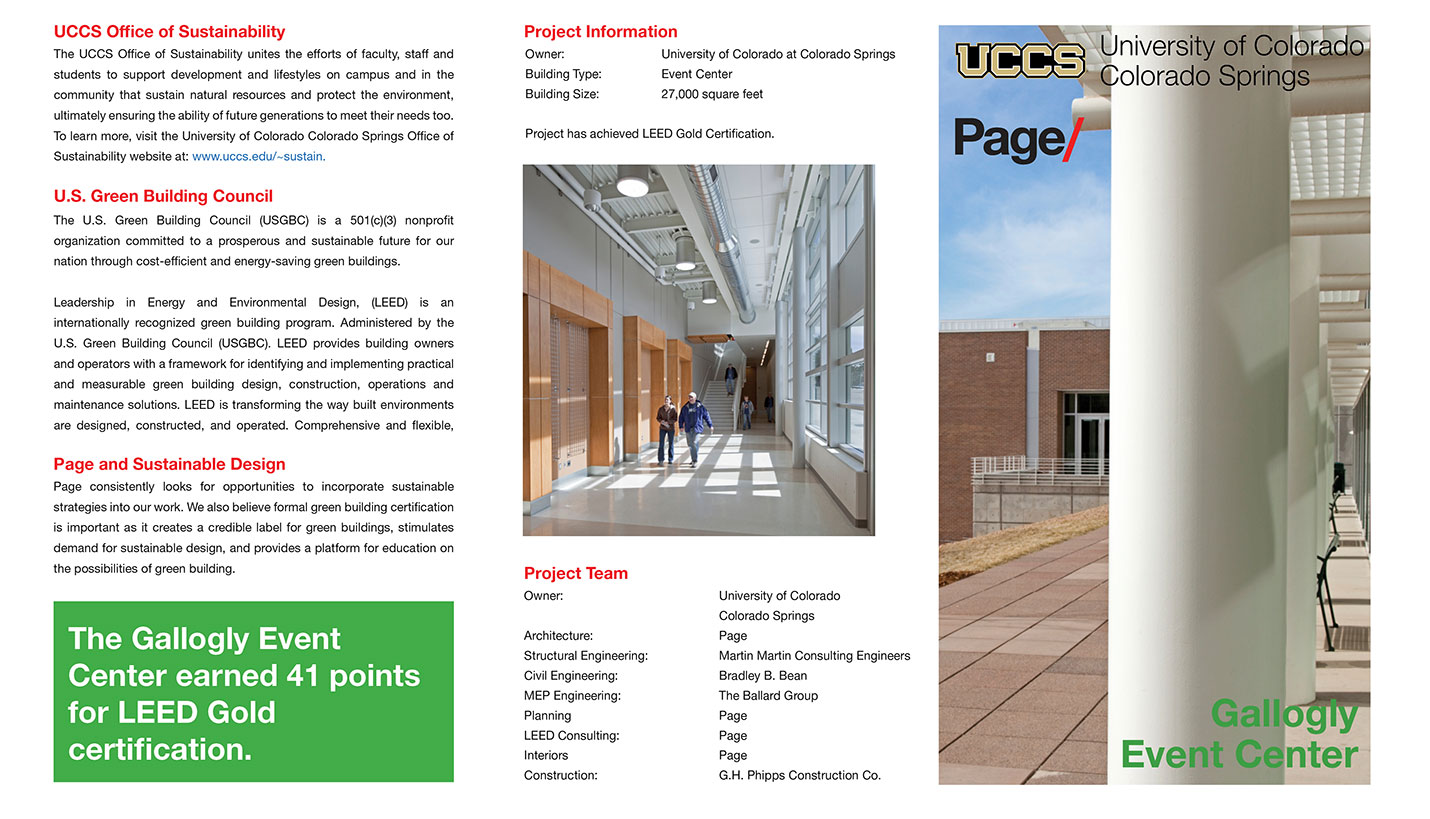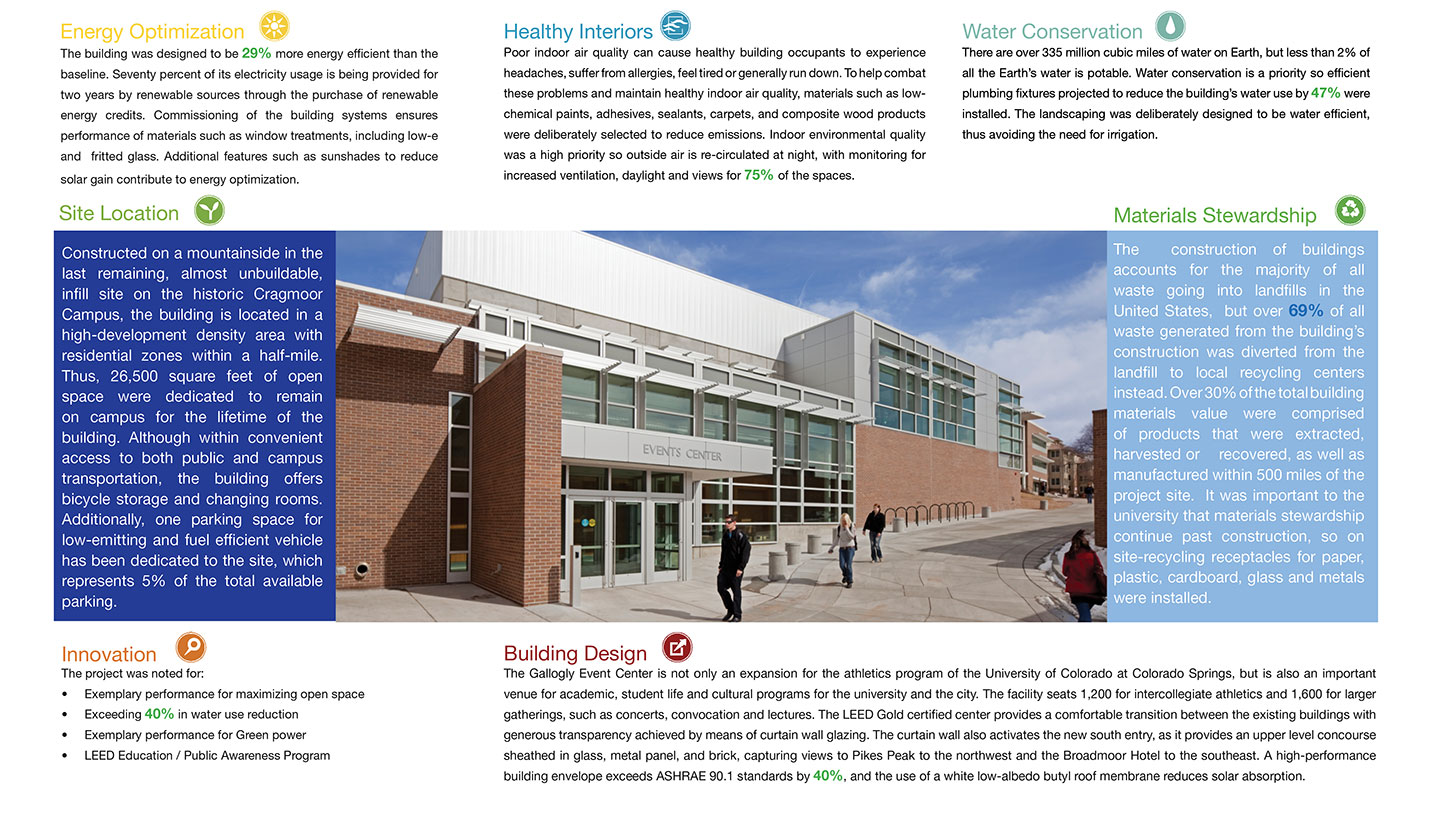Case Study: Sustainable Design at University of Colorado - Colorado Springs
Page worked closely with the University of Colorado - Colorado Springs to add to the campus' portfolio of LEED Gold-certified projects. Designed for a wide audience, these informational graphics about the Gallogly Event Center educate users and visitors alike about the various sustainable components which contributed to the project’s LEED certification.
Key sustainable design strategies include:
Energy Optimization: Window treatments, including low-e and fritted glass, sunshades, a high-performance building envelope and the use of a white low-albedo butyl roof membrane all help to save 29% compared to a conventional building's energy costs.
Healthy Interiors: To help maintain healthy indoor air quality, outside air is re-circulated at night, with monitoring for increased ventilation. Daylight and views are available for 75% of the space.
Water Conservation: The use of high efficiency plumbing fixtures play their part in helping to conserve water. On average, the building saves over 47% of water than a conventional building of the same type.
Site Design: The building was constructed on a mountainside in the last remaining, almost unbuildable, infill site. Since it is located in a high-development density area with residential zones within a half-mile, 26,500 square feet were dedicated to open space.
Building Design: The Center provides a comfortable transition between the existing buildings with generous transparency achieved by means of curtain wall glazing. The curtain wall also activates the new south entry, as it provides an upper level concourse sheathed in glass, metal panel, and brick.
Materials Stewardship: Over 30% of the total building materials value were comprised of products that were extracted, harvested or recovered, as well as manufactured within 500 miles of the project site.
10/21/2013
People
Blog Resources
Related Posts
- How Green Space Can Spur Economic Development
- Keeping Austin Green and Clean
- The Fifth Step in Creating a Net Zero Building: Putting It All Together
- New Student Facilities Open In Time for Fall Semester
- The Fourth Step in Creating a Net Zero Building: Evaluating Energy Measures
- The Third Step in Creating a Net Zero Building: Identifying & Evaluating Energy Saving Strategies
- The Second Step in Creating a Net Zero Building: Creating the Energy Team
Projects
- University of Colorado at Colorado Springs Gallogly Events Center











